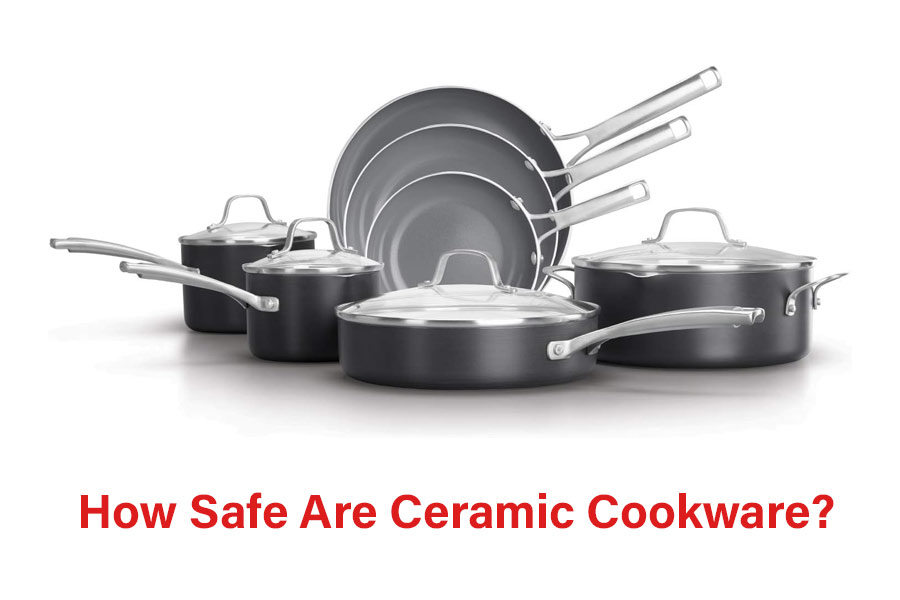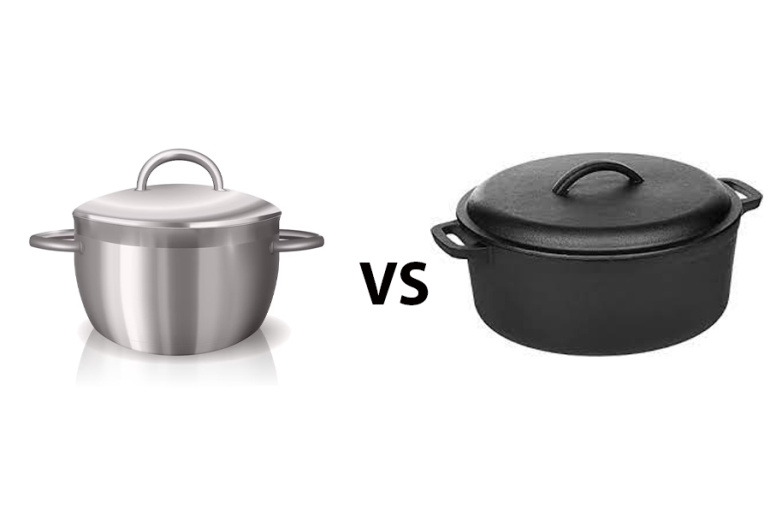Many people prefer ceramic cookware for their kitchen. Their earthy aesthetic vibes make them more eye-appealing and beautiful. But they are preferred not only for their aesthetics but also for their heat-retaining properties and even cooking ability.
However, many eco-friendly consumers are concerned about the chemicals and toxins that are found in modern cookware. For that, many think, “How safe is ceramic cookware”. To find the actual answer, we have assessed its positive and negative aspects along with a maintenance guide.
Contents
How Are Ceramic Cookware Made?
Clay, water, and other minerals are some of the organic components that go into the production of ceramic cookware. These components are combined, shaped into different shapes of cookware, and then heated in a kiln to very high temperatures.
The result is a cooking surface that is non-stick but does not include PFOA or PTFE, which are two chemicals that are often present in standard non-stick coatings and that, when heated, may generate toxic vapors.
What Are the Safety Aspects of Ceramic Cookware?
The safety aspects of ceramic cookware are given below:
- Surface being non-toxic: Ceramic cookware, which does not include PFOA or PTFE, is frequently marketed as a non-toxic alternative to conventional non-stick pans. This is because ceramic cookware does not contain these substances. Those who are worried about their exposure to chemicals while cooking may use it without risk because of this feature.
- Equal heating: Ceramic cookware has a surface that conducts heat uniformly, so it does not have hot spots that may lead to uneven cooking. This function guarantees that food is cooked fully, hence lowering the likelihood of dangerous germs surviving in sections of the meal that were not adequately cooked.
- High-temperature resistance: Ceramic cookware can endure high temperatures, making it perfect for a broad variety of cooking techniques such as searing, frying, and baking in the oven.
- Easy to clean: Ceramic cookware’s non-stick qualities mean it wipes clean without any scrubbing or abrasive cleaners, saving you time and energy.
- Durable: High-quality ceramic cookware has a reputation for longevity and, with regular maintenance, may serve you for decades.
Related: What Is the Safest Cookware for Your Health?
What Are the Disadvantages of Using Ceramic Cookware?
Even though it has several benefits, it does come with some disadvantages:
- Glaze Quality: The glaze that is placed on the surface of ceramic cookware is sometimes what determines the level of safety it offers. Ceramic cookware that is of poorer quality construction or a cheaper price may contain glazes of a lower grade, which, with time, may wear away and expose the underlying clay. It is very necessary to go for reputed companies that provide glazes of a high level of both quality and safety for consumption.
- Fragile base: Ceramic cookware is susceptible to breaking more easily than other types of cookware, such as cast iron or stainless steel. Because it is prone to breakage if it is dropped or exposed to sudden shifts in temperature, it must be handled with great caution to preserve its structural integrity and guarantee its reliability.
- Can contain lead and cadmium: Inexpensive ceramic cookware may contain lead or cadmium in its glazes, which, when heated, may leach into food and have harmful effects. In order to minimize this danger, you should search for cookware that has the labels “lead-free” and “cadmium-free.”
How to Properly Maintain Ceramic Cookware?
For optimal performance and durability, ceramic cookware requires regular care and maintenance. To get the most out of your ceramic cookware, try following these guidelines:
- Season thoroughly: Seasoning may improve the non-stick properties of certain ceramic cookware. Season by heating a little amount of oil on the hob for 10 to 15 minutes over low to medium heat. Using a paper towel, remove any extra oil when it has cooled.
- Use heat from low to medium: Avoid using high heat settings, since this might cause food to adhere to the ceramic and even burn. Instead, use a low to medium flame, which will do the job.
- Preheat slowly: Avoid thermal shock by slowly preheating your ceramic cookware. It’s best to begin cooking at a low temperature and work your way up.
- Wash using hands: Even if your ceramic cookware says it can go in the dishwasher, you should still wash it by hand. To clean the kitchenware, dip a soft sponge or towel into some warm, soapy water. The non-stick coating will last longer if you treat it gently like this.
- Don’t soak: It is best to avoid soaking your ceramic cookware for lengthy periods of time. A quick dip in the sink is good, but if you leave it there for too long, the non-stick coating might wear off.
- Remove stains properly: If you find any traces of food, such as stains or residue, get rid of them as soon as possible. Scrub the area gently with a nonabrasive sponge or towel after soaking it in warm, soapy water.
- Don’t overlook damage: Always check your ceramic cookware for damage, such as chips or cracks in the ceramic covering, before using. If you find any problems with your cookware, you may want to consider replacing it.
FAQ
Can I use ceramic cookware for cooking safely?
Ceramic cookware has a solid reputation for being completely safe. Made from all-natural ingredients, it’s free of hazardous chemicals like PFOA and PTFE found in conventional non-stick coatings.
Why is ceramic cookware a safe choice?
Because it does not react with food, does not give off poisonous fumes at high temperatures, and has a non-stick surface without the use of dangerous chemicals, ceramic cookware is a safe option.
Can I use ceramic cookware at high temperatures?
In general, ceramic cookware is resistant to heat and can tolerate high temperatures, making it useful for searing baking, and other uses.
How do you maintain the safety of ceramic cookware?
To keep ceramic cookware in good condition and prevent accidents, it is important to choose high-quality brands, treat it gently, examine it often for damage, and use it as recommended.
Conclusion
Overall, ceramic cookware is nontoxic and provides a healthy, non-stick surface for cooking. Ceramic cookware has a bad reputation due to worries about glaze quality and wear, but if you buy good ceramics and follow the care instructions, you may use it worry-free and have a great time in the kitchen.
I live in New York, United States. I did my graduation the City University of New York. Now I am a housewife. I am passionate about cooking and I also specialize in cookware and kitchen appliances. I have 6 years more of experience with cookware and kitchen appliances product review. If you have any queries about cookware and kitchen appliances you can easily contact us.





